Top 10+ Email Marketing KPIs and How to Use them to Optimize your Campaigns

If you think email marketing is dead, think again.
According to multiple studies, emails are 40 times more effective for client conversions than social media. But simply sending out email campaigns doesn’t necessarily mean you will achieve significant success; you need to optimize, A/b test, and report on your results to see how to improve them. In this guide, you will learn the top 10 email marketing KPIs and how to use them to track and optimize your campaigns.
- What are Email Marketing KPIs?
- - Why tracking email metrics is essential for your business
- Top Email Marketing Metrics to Track
- How to automatically track Email Marketing KPIs with Dashthis?
What are Email Marketing KPIs?
Email marketing KPIs (Key Performance Indicators) are metrics used to track and measure the success of email marketing campaigns. They help businesses evaluate the performance of their email campaigns and make informed decisions to optimize email marketing strategies.
Here’s an example of an email marketing report.
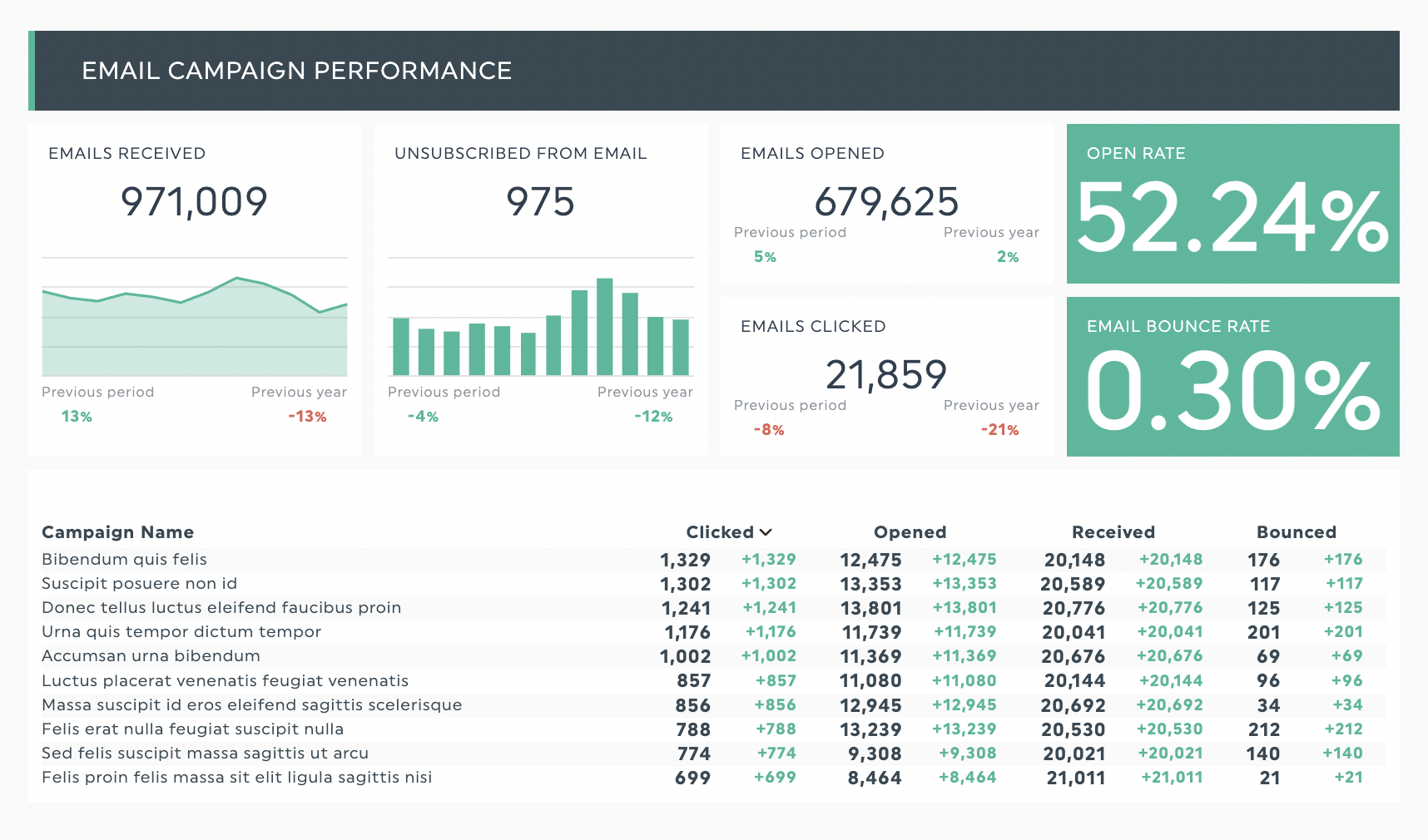
Grab this email analytics report with your data!
Why tracking email KPIs is essential for your business.
Tracking email marketing KPIs is essential for businesses because it allows to measure the effectiveness of email campaigns and make data-driven decisions to optimize future campaigns.
Let’s dive in further on some of those reasons.
- It helps you understand your target audience: By tracking email open rates, click-through rates, and other metrics, you can gain insight into what resonates with your audience and what doesn't. This can help you tailor your email content and message better to meet the needs and preferences of your subscribers.
- It enables you to optimize your campaigns: By tracking KPIs, you can identify areas of your campaigns that may need improvement. For example, if your open rates are low, you may need to improve your subject lines or email design to increase engagement.
- It helps you measure ROI: By tracking revenue generated from your email campaigns, you can measure your email marketing efforts' return on investment (ROI). This can help you justify your email marketing budget and allocate resources more effectively.
- It allows you to benchmark your campaign performance: By comparing your KPIs to industry benchmarks, you can better understand how your campaigns stack up against your competitors and identify areas where you may need to improve.
Top Email Marketing KPIs to Track
These are the top email KPIs to track according to email marketers. By tracking these KPIs, they can help better understand their results as well as optimize new campaigns.
Number of subscribers
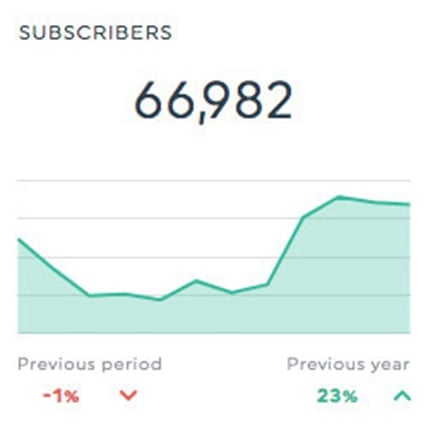
The number of subscribers in email marketing refers to the total number of individuals who have opted-in to receive emails from your organization or brand. This metric is typically tracked over time to monitor the growth of your email subscriber list and the reach of your email marketing efforts.
To ensure that your email list is composed of engaged and interested subscribers, it is important to implement best practices for email acquisition and list management, such as:
- Obtaining permission from subscribers to receive emails
- Using double opt-in to confirm email subscriptions
- Segmenting your email list based on subscriber interests and behavior
- Regularly cleaning and pruning your email list to remove inactive or unengaged subscribers
- Providing relevant and valuable content to your subscribers
List growth rate
The list growth rate in email marketing refers to the rate at which your email list is growing over a particular period of time. It is calculated by subtracting the number of unsubscribes and email opt-outs from the total number of new email subscribers and dividing the result by the total number of email subscribers at the beginning of the period. The result is then multiplied by 100 to get a percentage.
For example, if you started the month with 1,000 email subscribers, gained 100 new subscribers, and had 50 unsubscribes, the list growth rate for that month would be ((100-50)/1000) x 100 = 5%.
Open Rate

Although the number of subscribers is an important metric, you might want also to analyze the open rate, which gives a better overview of subscriber engagement.
The open rate in email marketing refers to the percentage of email recipients who opened a particular email. It is calculated by dividing the number of people who opened the email by the total number of emails delivered.
Open rate is an important metric to track because it can provide insight into the effectiveness of your subject lines and email content. If your unique open rate is low, it may indicate that your subject line is not compelling enough or that your email content is not engaging enough to entice subscribers to open it.
Click-Through Rate
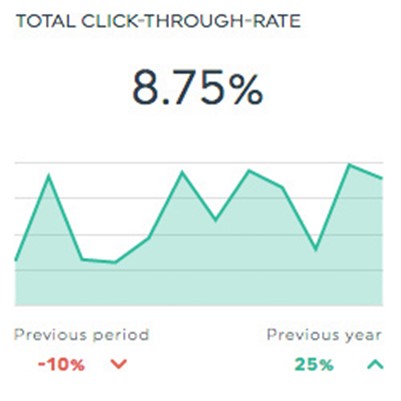
The click-through rate (CTR) refers to the percentage of email recipients who click on a link within an email. It is calculated by dividing the number of clicks by the number of emails delivered and multiplying the result by 100 to get a percentage. It holds a lot of weight in nurturing sales emails and gives a lot of insights into subscriber engagement.
A low click rate means you should try a/b testing, create more personalized email content or segment your email lists.
Return on Investment
Emails can affect lead generation and boast massive ROI.
Return on Investment (ROI) refers to the financial return you receive from your email marketing campaigns compared to the cost of running those campaigns. It is calculated by dividing the total revenue generated from your email campaigns by the total cost of running them.
For example, if you spent $1,000 on an email marketing campaign and generated $10,000 in revenue, your ROI would be 10 ($10,000 divided by $1,000).
Tracking the ROI can also help you justify your email marketing budget to stakeholders and demonstrate the value of your email marketing efforts to your organization.
Conversion Rate

How many of your customers converted to your email marketing strategies? Conversion rate. If you’re a marketer, chances are, you’ve used these metrics before, as it is one of the best indicators that your marketing efforts are paying off.
The conversion rate in email marketing KPIs refers to the percentage of subscribers who take a desired action after clicking on a link in an email. The desired action can vary depending on the goal of the email campaign but typically includes actions such as making a purchase, filling out a form, downloading content, winning back sales in an abandoned cart, or subscribing to a service.
Unsubscribe Rate
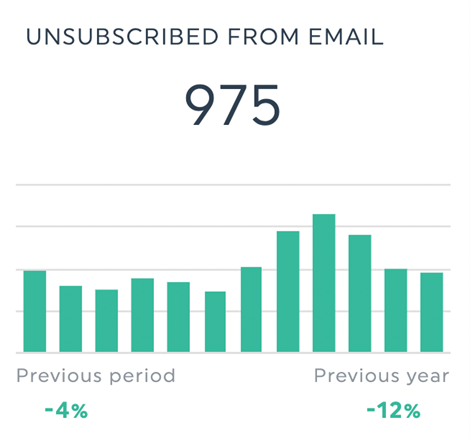
High unsubscribe rates: irrelevant content.
The unsubscribe rate in email marketing refers to the percentage of subscribers who opt-out or unsubscribe from receiving further emails from your organization after receiving a particular email. You want this rate as low as possible, although it’s not all bad. People that unsubscribe might have never converted, so having an email list with people interested in your content means you could have a higher conversion rate.
Spam Complaint Rate
The spam score in email marketing measures the likelihood of an email being marked as spam by email filters or recipients. It is a score assigned to an email that considers various factors contributing to the likelihood of an email being flagged as spam.
Monitoring and optimizing your email campaigns for a low spam score is important to avoid being flagged as spam. This can be done by adhering to best practices for email marketing, such as:
- Using a reputable email service provider
- Obtaining permission from recipients to send emails
- Ensuring that your email list is clean and up-to-date
- Using clear and relevant subject lines
- Including a clear and prominent unsubscribe link
- Be mindful of the number of emails you send to subscribers
Bounce Rate
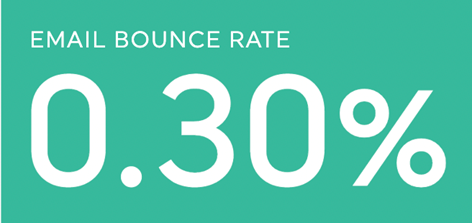
The bounce rate is the percentage of emails not successfully delivered to the recipient's inbox. Bounces can occur for various reasons, such as an invalid email address, a full inbox, or a blocked one.
There are two types of email bounces: hard bounces and soft bounces. Hard bounces occur when an email is permanently undeliverable, such as when the email address is invalid or no longer exists. Soft bounces, however, are temporary delivery failures, such as when the recipient's inbox is full or their email server is temporarily down.
Considering the industry standard is 0.7%, the bounce rate below is a serious cause of worry.
Unique Clicks
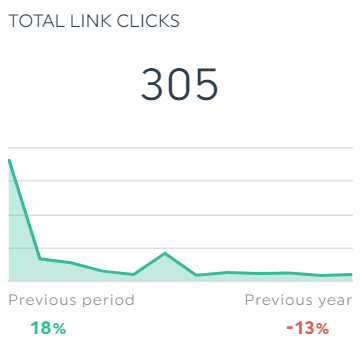
Tracking link clicks is the best way to understand what makes subscribers tick.
The link clicks metric in email marketing refers to the number of times subscribers click links within your email campaigns. This metric is an important indicator of subscriber engagement and can help you measure the effectiveness of your email content and calls to action.
It indicates the engagement and effectiveness of each link click (refresher: use our Campaign URL Builder to create UTM codes and track them in Google Analytics).
How to automatically track Email Marketing KPIs with Dashthis?
The email marketing KPIs you track should align with overall business goals and email marketing strategy. Now that you know the top KPIs, here’s how to track them efficiently, and we’ve got awesome news: the days of manually retrieving email marketing data are long over.
Introducing DashThis.
Our automated reporting tool tracks all email marketing metrics in one beautiful report. Whether you want to create an SEO + email marketing or a complete digital marketing report, you can create them instantly within minutes.
To get started:
- Connect your email client accounts (e.g., Active Campaign, HubSpot, Klaviyo)
- Select our email marketing report template
- Add Preset Widgets or other
- Drag and drop metrics as you desire
- Save your report or share it with clients, stakeholders, or team members
Here’s an example of what your report could look like.
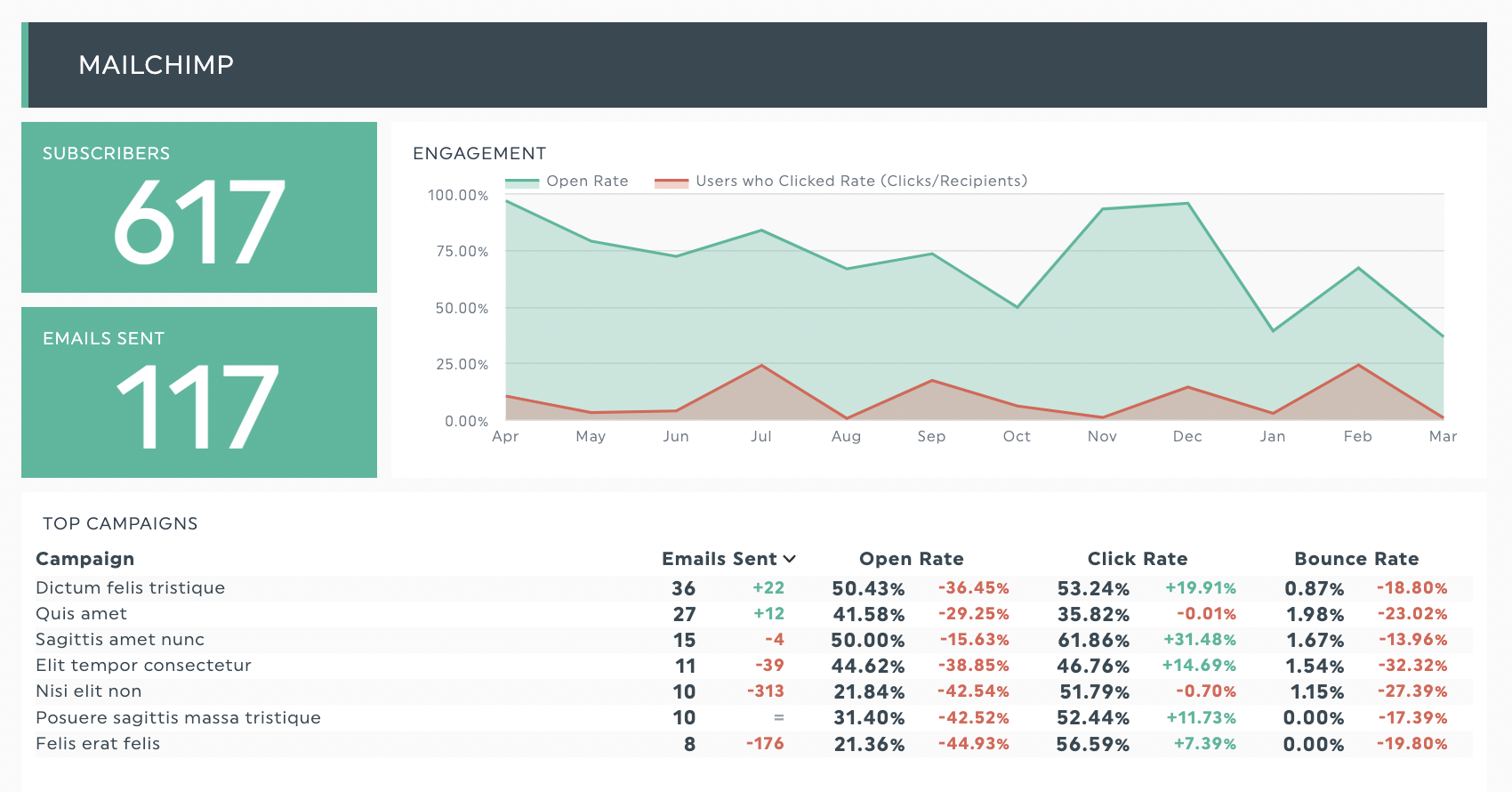
DashThis turns your metrics for email marketing and other marketing channels into one beautiful report. Start your free 15-day trial today, with no credit card required.
Track all your email marketing metrics in one easy-to-use automated reporting tool.
Track all your email marketing data in one automated report.
Read More
Don’t miss out!
Automate your reports!
Bring all your marketing data into one automated report.
Try dashthis for free

